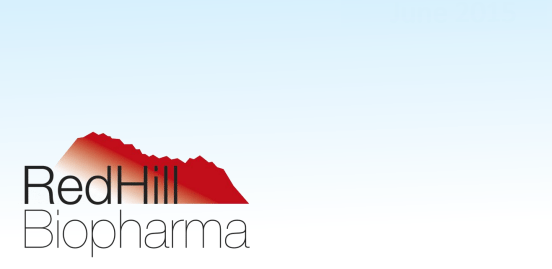
At market close on Monday, June 15, Israel-based biopharmaceutical company RedHill Biopharma (NASDAQ:RDHL) announced the results of a phase 3 study of its lead candidate RHB-105 for H. pylori Infection. The results were overwhelmingly positive, with RedHill reporting that the topline data demonstrated the successful meeting of the trial’s primary endpoint, and – as a result – we saw a 16% increase in the company’s market capitalization during the day. With this said, what are the details and implications of the trial for RedHill going forward, is the percentage increase justified, and is it too late to take a position in expectations of further gain?
First, let’s take a quick look at the treatment candidate and the science behind it. RHB-105 is a fixed dose oral, combination therapy, meaning it incorporates two different types of treatment. The first type consists of two different antibiotics, rifabutin and amoxicillin, which most of you will already have heard of. These work to eradicate a bacteria called H. pylori, which plays a critical role in gastritis, peptic ulcers and gastric cancer, and is estimated to affect up to 40% of people in the US alone. The second type of treatment included in the orally administered pill is what’s called a proton pump inhibitor. In the human body, the gastric proton pump of the gastric parietal cells are responsible for gastric acid secretion. A proton pump inhibitor blocks this system, and reduces the amount of acid present in a patient’s stomach.
At the moment, the rapid rate of antibiotic use globally is leading to a high rate of resistance to more standard treatments, and this opens up an opportunity for RHB-105 to stand in as a second line treatment for patients resistant to current standard of care. Further, with it being a combination therapy, it also has the potential to become a first-line treatment farther down the line.
Adding to the allure of RedHill and its candidate RHB-105 as a potential investment opportunity is the latter’s status of being a coveted Qualified Infectious Disease Product (QIDP). QIDP status is granted to treatments that target pathogens with a high degree of unmet need, as identified by the Center for Disease Control (“CDC”) in the US. The benefits of this program includes fast-track development, priority review, and an extended market exclusivity to – in this instance – a total of eight years. Analysts currently put the market potential for the treatment at approximately $1.45 billion in the US, and $4.83 billion respectively.
So what did the latest phase III trial reveal? Topline results from the study demonstrated an 89.4% efficacy in completely eradicating the H. Pylori infection. Primary endpoint was to demonstrate superiority over historical standard of care efficacy (70%), meaning the trial met and far exceeded its goal. Further, no serious adverse events were reported or noted in the study. What’s next? RedHill expects to have its clinical study reports completed and submitted in Q3 2015, and is currently planning a meeting with the FDA to discuss the clinical regulatory path for approval of the treatment as a first-line therapy.
So where do we go from here? Well, this company could be something of a rollercoaster over the coming 12 months – but this presents us with an opportunity to profit from any event driven volatility. Another of its candidates – RIZAPORT™ (RHB-103) for Migraines – is currently being assessed in both Europe and the US, and any press releases that address the status of these assessments could dictate a medium-term bias in RedHill’s market capitalization. The company submitted a response to issues cited by the FDA relating to the treatment in March 2014, and – according to its latest presentation – expects approval subject to satisfactory resolution of the securing of a compliant source of raw material for the drug. Feedback from the European assessment is expected in the final quarter of this year.
So what’s the takeaway? Simply, that this is going to be one to watch this year. Data from the most recent announcement has proven efficacy, and – with a number of other promising candidates in the pipeline – RedHill has the potential to be a rewarding allocation in any portfolio. Obviously there are risks associated with investing in development stage biotechnology company such as this, and investors should be aware of these risks before taking a position, but the late stage success of the aforementioned trials gives us something of a mitigation of this risk, at least when compared to other companies with a similar market capitalization.
Looking for an IPO play? Find out our thoughts on Pieris (OTCMKTS:PIRS) here.




